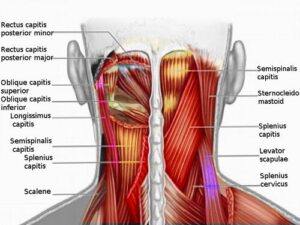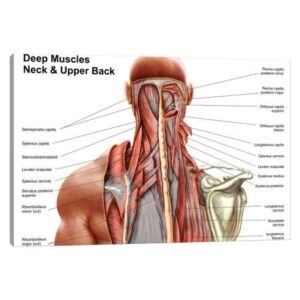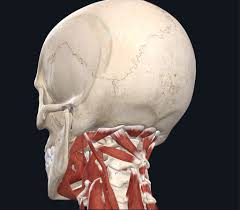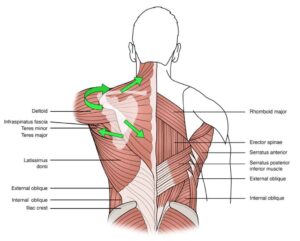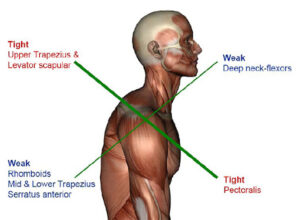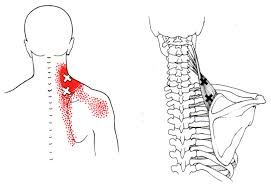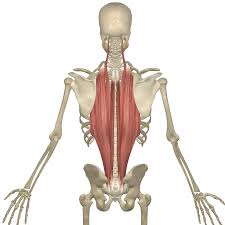

In this article, I’ve explained the six muscles in my cervical spine I had to fix in order to correct my forward neck posture.
I did not developed forward head posture overnight.
It was a slow and steady process that took a couple of years to get completely formed. The forward shift of the head owing to the voluntary tilt to the cervical spine is what is termed as a ‘forward neck’.
So, in my case, my head was almost always 2 inches in front of my body’s normal posture. I figured this out when I saw my profile in the mirror. Two things caught my eye:
@ My earlobes were a few inches ahead of my cervical spine.
@ My shoulders were always hunched forward.
My friendly often made fun of me saying, “I had sloping shoulders – just like a twin slide.” It was not the crane neck posture but the stiffness and pain in the neck and upper back muscles that got my attention.
The aches and pains had become so severe that I had no choice but to look for a permanent forward head posture fix. I even started to suffer from tension headaches.
Nonetheless, first I had to find out which muscles in my cervical spine were damaged by my forward neck posture.
So, my write-up today is all about these neck muscles only. I had to first correct them if I was to regain my normal head posture.
So, let’s get started:
Six Muscles in My Cervical Spine I Had to Fix in Order to Correct My Forward Neck Posture – Article Contents:
1) Interesting Facts on My Cervical Spine?
2) What was the Side Effect of My Forward Neck on My Sternocleidomastoid Muscles?
3) How were My Suboccipital Muscles affected by My Forward Neck Posture?
4) What was the Ill Effect of My Forward Head Posture on My Trapezius Muscles?
5) How was My Deep Cervical Flexors Damaged by My Nerd Neck?
6) How did My Bad Neck Damage My Levator Scapulae Muscle?
7) FAQs on Text Neck and Muscle Damage
8) How My Vulture Neck Posture Damage My Erector Spinae?
8) Takeaway
Interesting Facts on My Cervical Spine?
My spine consists of three major parts. These are the Atlas, the Axis and the Facet Joints.
Let me walk you through how each of these enable my cervical spine to work optimally:
@ The first is the cervical spine. The second is the Thoracic spine and the third is the Lumbar spine.
@ While the cervical portion covers my neck, the Thoracic covers my middle back. The Lumbar covers the lower back – all the way down to my hip.
@ My cervical bone (just like yours) consists of 7 bones. These are stacked one over the other. These are divided into seven parts – C1 to C7 vertebrae.
@ The first vertebrae are termed as the Atlas. This is termed as the C1 vertebrae. It holds my head upright and hence, the term ‘Atlas’ has been given to it.
@ The second vertebrae is termed as C2. It is termed Axis. C2 vertebrae is right below my C1 vertebrae. It permits the Axis to shift from side to side. So, I can shift my head from one side to another (left to right and vice versa) with the help of the Axis.
@ The facet joints connect the C1 to C7 vertebrae with the spinal bone. These facet joints are responsible for allowing my head to shift forwards, backwards and sideways.
What was the Side Effect of My Forward Neck on My Sternocleidomastoid Muscles?
The Sternocleidomastoid Muscles are located at the back of the spine. The anterior and posterior angles of the neck are demarcated by these muscles.
This palpable muscle is responsible for allowing me to rotate my neck from side to side. My flawless head/ neck movement was hampered as the anterior and posterior angles of the sternocleidomastoid muscles lose their synchronization.
All this was owing to my forward neck posture. Both the superficial and surface muscles of the neck were damaged and needed to be fixed. I later learned that the total number of red (anaerobic) fibers increased and the white (aerobic) fibers decreased, in my sternocleidomastoid muscles.
So, I found it difficult to rotate my neck and even shift the head forward or backwards.
How were My Suboccipital Muscles Affected by My Forward Neck Posture?
The next muscle group that were stretched by my bad neck posture were the Suboccipital Muscles. These muscles are located right under my occipital bone.
All the movements between my skull and the C1 vertebrae are controlled via these muscles. These comprise of 4 muscles namely:
@ the rectus capitis posterior major,
@ rectus capitis posterior minor,
@ obliquus capitis and
@ obliquus capitis superior.
My bad neck posture forced the suboccipital muscles to become super-stiff. Owing to the strained Suboccipital Muscles, I suffered dull constant pain on top of my neck.
The pain shifted from the top of my neck to my forehead as well. My “stress headaches” were also caused by the trauma suffered by my Suboccipital Muscles.
All this was owing to my vulture neck posture.
What was the Ill Effect of My Forward Head Posture on My Trapezius Muscles?
The third muscle on my neck that was affected adversely by my poor neck posture was my trapezius muscles. These muscles extend from my cervical to thoracic.
Basically, my neck and trunk are connected via this muscle.
My trapezius are the most extensive muscle group in my body. I found out (much to my dismay) that my bad neck posture had unnaturally stretched the superior, inferior as well as the middle portion of my trap muscles.
The maximum damage done to my trapezius muscles resulted in hampered bilateral contraction of my neck.
How was My Deep Cervical Flexors Damaged by My Nerd Neck?
The next muscle group in my neck that were damaged by my constant forward head movement was my deep cervical flexors. This muscle is located at the back of the spine.
While there are 4 sub-muscles that comprise of deep cervical muscles, I shall discuss only longus coli in this article. Apparently, longus colli is responsible for helping my chin move forward.
So, my head tends to shift forward and retract backwards via the aid of longus colli. Because I suffered from my forward neck posture, my longus colli was overtly stretched.
This in turn forced my head to slouch 2 inches forward from its natural position. My spine has to therefore bear a weight of 40 pounds because of this.
How did My Bad Neck Damage My Levator Scapulae Muscle?
The next muscle that was affected adversely because of my bad neck posture is an extrinsic muscle. It is termed levator scapulae.
The vertebral column is affixed to the upper limb via the aid of the Levator Scapulae. In simpler words, it stretches from the C1 vertebra to the C4 vertebra.
As I was bending my head forward constantly, this muscle in the neck was damaged. I could feel the muscles on the side of my neck to become exceedingly stiff.
Neck rotation and shifting my neck from one side to the other therefore became a rather painful task. So apparently, my crane neck posture has indeed stiffened and damaged my Levator Scapulae.
It needed to be fixed.
How My Vulture Neck Posture Damaged My Erector Spinae?
The last and final muscle that was damaged by my forward neck posture was the erector spinae. It is a core muscle that lies just beneath the thoracolumbar fascia.
As the bilateral contraction of the erector spinae was compromised, I was unable to maintain optimal head extension. Even head rotation and flexion was compromised owing to irregular unilateral contraction of the erector spinae.
Stiffness in the neck and upper back that later caused lower back pain was all a resultant of a damaged Erector Spinae. This was all a handiwork of my bad neck posture.
FAQs on Text Neck and Muscle Damage
Q-1: Which six cervical muscles are most critical to address when correcting forward neck posture?
A-1: The key muscles include the deep cervical flexors (longus colli and longus capitis), sternocleidomastoid, upper trapezius, levator scapulae, and suboccipital muscles. These muscles often become imbalanced and need targeted correction.
Q-2: Why are the deep cervical flexors important in fixing forward neck posture?
A-2: The deep cervical flexors stabilize the neck and help maintain proper head alignment. As per bestforwardheadposturefix.com, “Strengthening these muscles counteracts the forward pull of the head, which is crucial for posture correction”.
Q-3: How does the sternocleidomastoid contribute to forward neck posture issues?
A-3: The sternocleidomastoid often becomes overactive and tight in forward head posture, pulling the head forward and rotating it, which perpetuates misalignment and muscle imbalance.
Q-4: What role do the upper trapezius and levator scapulae muscles play in this condition?
A-4: These muscles frequently become tight and overworked as they compensate for poor posture. This tension can cause neck stiffness and discomfort, making it essential to release and stretch them during correction.
Q-5: Why is it important to address the suboccipital muscles when correcting posture?
A-5: The suboccipital muscles, located at the base of the skull, often become shortened and tense due to forward head posture. Relaxing and lengthening these muscles helps restore normal head position and reduce neck pain.
Focusing on these six muscles through strengthening, stretching, and relaxation techniques is vital for effectively correcting forward neck posture and alleviating associated discomfort.
Takeaway
There are approximately 20 muscle groups that help my neck and head remain stable. If any of these is stretched or damaged then, my neck and head movement would be compromised.
My text neck caused brain fatigue and I had a tough time figuring out that my weakened spinal muscles were to be blamed for this.
The above 6 muscles of my neck were either stretched or damaged because of my forward head. If I do not correct my forward head then, the muscle aches and pains can lead to further complications.
Some of these complications include breathing issues, pain in the chest, pain in the lower back, TMJ issues, upper back pain and muscle imbalance. All this may ultimately lead to poor body posture.
So, the moment I realized that I was suffering from bad neck posture, I immediately focused on fixing the 6 muscles of my neck (the ones I have discussed above) that were damaged.
References:
